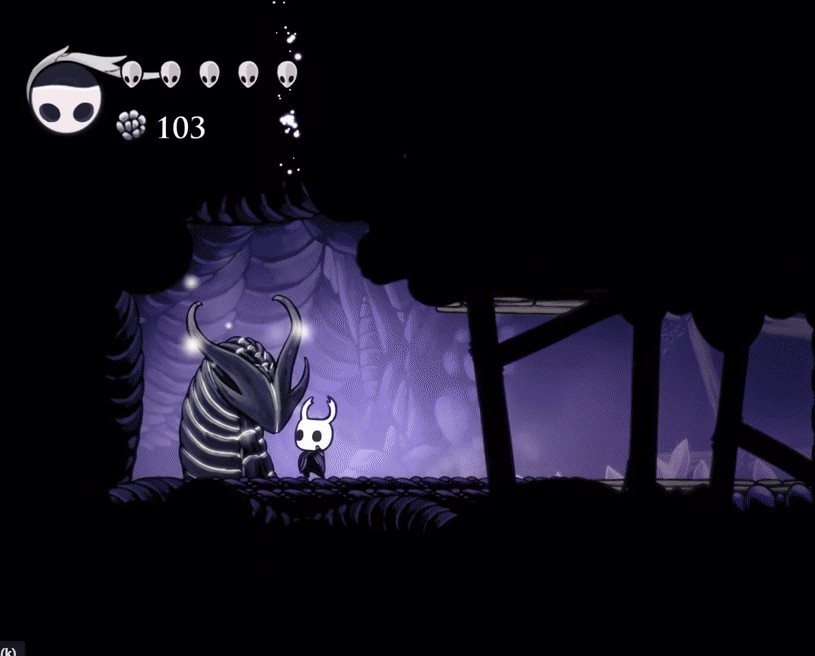What decisions a designer will run into while designing learning experiences.
For a long time, it has been customary for tutorials to be a part of the First Time User Experience (FTUE). Usually, this meant that the journey would start from installing the game, followed by a rundown of the UI, adjusting preliminary settings, and being thrown into a tutorial. For newer games, logging into platforms and collecting player permission was adjusted somewhere in that flow.
As games get longer and longer and accommodate increasingly more complex mechanics with increasing hours of game time, it has become evident that teaching everything at the start and calling it a day is no longer sufficient as a tutorial. The concept of “taught when required” has made sure that multiple tutorial sections are present in a game’s journey from start to finish. Tutorials have long been divorced from the FTUE and their positioning and their appearances are now a close function of the pacing of the rest of the game.
While allowing to skip tutorials is a minimum requirement in today’s world, skipping a tutorial due to frustration may lead to a bad experience for the rest of the game. So let’s define a good, frustration-free tutorial and look at a few key decisions that will define exactly how much your players will want to skip the tutorial and what you can do about it.

Defining a “good” tutorial
The “goodness” of anything is an extremely subjective opinion. It matters on the situation, the actors, the stakeholders, the context, and a lot of other details. This means that even for a tutorial, goodness will be dependent on the game, genre, expectations created by marketing, and most importantly — the needs of the player. Respecting the pacing of the rest of the game will mean the tutorial will also depend on when exactly it is taking place in the timeline of the game experience, what mechanic is being introduced in the tutorial, what state of mind the player is in, and the designer’s expectations of the outcome. The following list of questions may be heard in a discussion about tutorials (this is, by no means, exhaustive)
- Did the player learn what we wanted them to learn?
- Did the player understand how to use what we taught them?
- Did the players understand the relation of this new thing with the old things they already know?
- Was the tutorial frustrating?
- Was the tutorial irritating?
- How many players completed the tutorial?
- Was the tutorial too long?
All these questions hope to surface the outcome of any tutorial section which can be gauged in two parameters — knowledge/skill gained (did the player learn what was expected) and negative emotions (how many negative emotions did the tutorial cause)
Knowledge/skill gained
It is important to differentiate between knowledge and skill as there will be different ways to evaluate both. Knowledge is simply a piece of information that the wielder can utilise in any way whatsoever, which introduces a modicum of subjectivity to evaluation. For example, the fact that different pieces in chess have different behaviour is a piece of knowledge with which a player can come up with near-infinite plans of action to win. There is no way to evaluate whether a piece of knowledge was grasped the way the designer intended, since the outcome may not always reflect what was learnt. A player can use the piece of knowledge in any way, or can even lose despite knowing all facets of the information if the opposing player devises a better plan using the same knowledge. It is also quite possible for one to win with no knowledge whatsoever, where luck or a fluke can play a part. Skill, on the other hand, has much to do with practice and dexterity. The ability to kick a ball may be simple but to hit a pinpoint target takes immense practice, and the outcome is objectively measured no matter the situation. The player may kick the ball during practice, in a heated match, vs a good or bad opposing player, but skill will dictate that the outcome is always the same.
Both knowledge and skill, can be gained at the end of learning or practice sessions.
Negative emotions
Years of game design research have told us that negative emotions such as frustration, anxiety, or boredom arise from a mismatch of experiences and expectations that arise due to problems with the pacing. With the mere mention of pacing and video games, everyone must reliably refer to the flow theory (refer to paper by Mihaly Csikszentmihalyi and work by Jenova Chen). While every designer is expected by now to be familiar with these pieces of literature, an important take-away is that introducing new things to a game depends on what phase the game is in and what is the trade-off between the different ways of crafting its tutorial that will affect the state of flow.
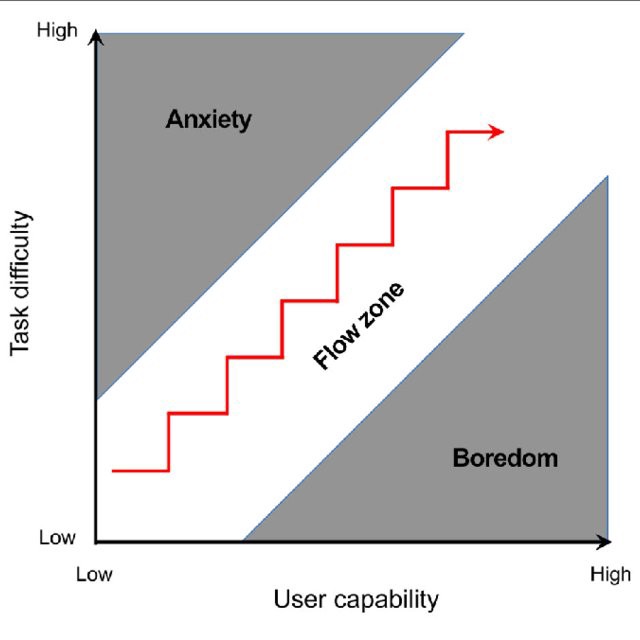
Gauging the “goodness” of a tutorial
Having defined that the negative emotions caused by a tutorial are due to pulling players out of the flow zone, goodness is a simple understanding of how much deviation from the flow zone a player had to go to learn knowledge or gain a skills.
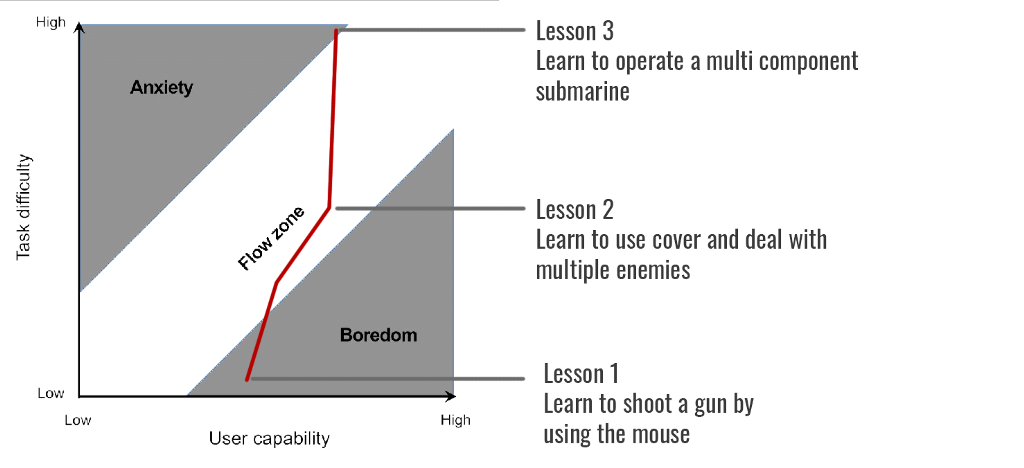
No tutorial exists in a vacuum. There will always be preceding and succeeding experiences (which may or may not be more tutorials). Even if the first tutorial is the first experience with the game, the player’s expectations from the game will always precede it as an experience. It is not as simple as to say that the tutorial must fit within the flow zone, since there are multiple interdependent factors for that. For example, the tutorial to teach how to pilot a multi-part, complex submarine at the early beginner level may cause tremendous anxiety, whereas stopping a heated encounter to remind players how to reload will be very annoying. It is a very complex relationship of player emotions and expectations that will affect their own flow zone and how tutorials (or any section of the game) will be perceived.
What designers call an “invisible tutorial” is simply a tutorial section that fits perfectly in the flow zone, which values the preceding and succeeding events and respects player expectations. There will never be a situation where a player does not realise they are not participants of a tutorial, but an invisible tutorial will hardly be discernible from the game experience as it respects the pacing of all experiences around it.
Roles of a tutorial
A tutorial has primarily four basic functions —
- To introduce to the new game mechanic and its underlying or supporting systems (impart Knowledge)
- To teach the actions that are important to this new mechanic and how they fit in the system supported by the mechanic (allow to build Skill)
- To explain how the new mechanic and its systems fit with the already introduced mechanics and the overarching systems (impart Knowledge)
- To create expectations of how players will be influenced or can influence the game using these new actions and the mechanic (impart Knowledge and show what high Skill can look like)
The role of a tutorial is to carry out these four functions every time is appears, whether for a single, multiple, or a complex system of mechanics.
Based on these roles, let’s look at a few decisions that a designer will run in to and what trade-offs could occur.
Decision 1
How much do we rely on players’ intuition?
Intuition really just means familiarity. Players don’t need to be taught what they are familiar with, they simply need to be told of its existence. If the concept is similar to something that is already in the player’s mind, the fastest way to teach them is to help bridge that gap by creating associations. And if it exactly like something that is experienced commonly, there is no need to teach it at all.
Taking an example, who needed to be taught how to select and control their units in Anno 1800? For almost all isometric strategy games, whether RTS, sim, 4×4, or even MOBAs, the standard interaction is to select units with left click or drag and move them by right-clicking on the designated spot.
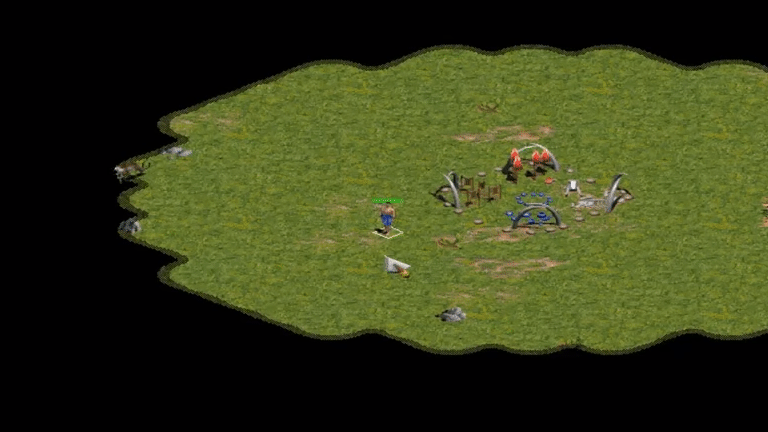
More notable examples include “Use WASD to move”, or “Press LT to aim and RT to shoot” which are standards of the medium as a whole.
Making an intuitive tutorial is more about utilising familiar concepts and less about hoping that the players are inquisitive. This familiarity may stem from what players are playing besides your game, or even from what they have been doing inside your game for a long time.
For example, the first few moments in Hollow Knight teach a player how to attack. There is no more than a single prompt that tell players what action allows them to attack, after which it is never repeated. This stems from the familiarity of the 2D platforming genre where usually one type of attack corresponds to one type of input.
Immediately after receiving this knowledge, the level is densely packed with situations to enforce this knowledge. After defining it as a medium of interaction once, it’s never reminded again since it’s the only way the player knows how to interact with things in that world.
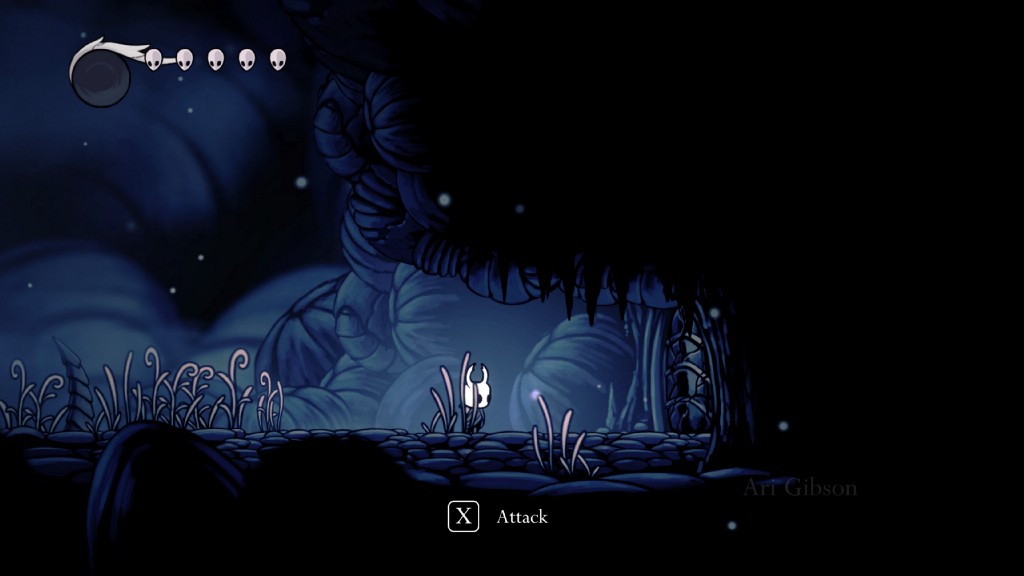
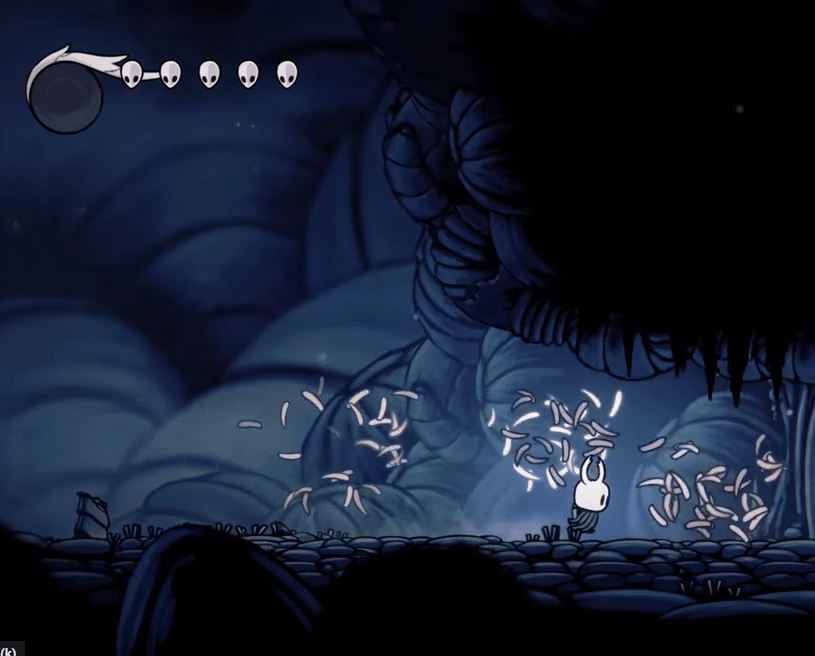
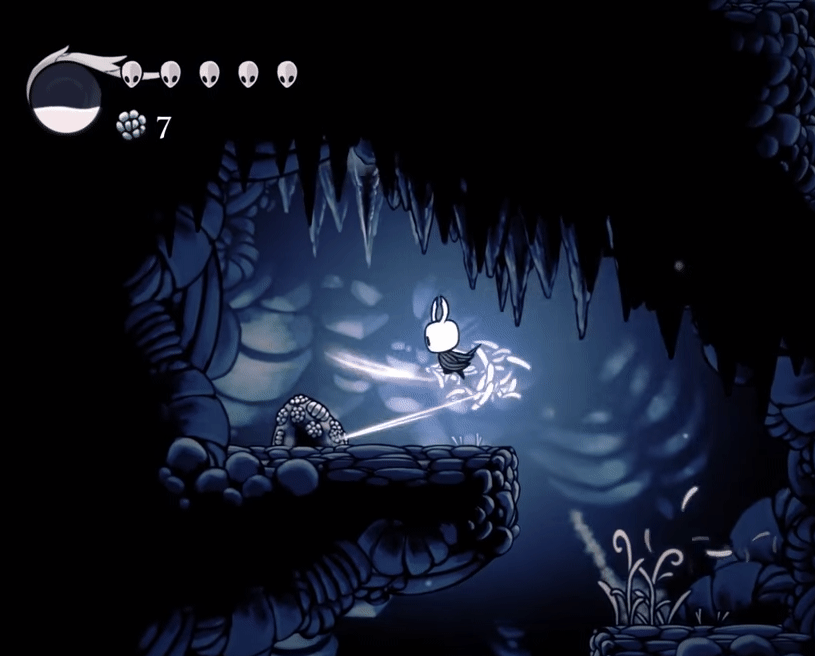
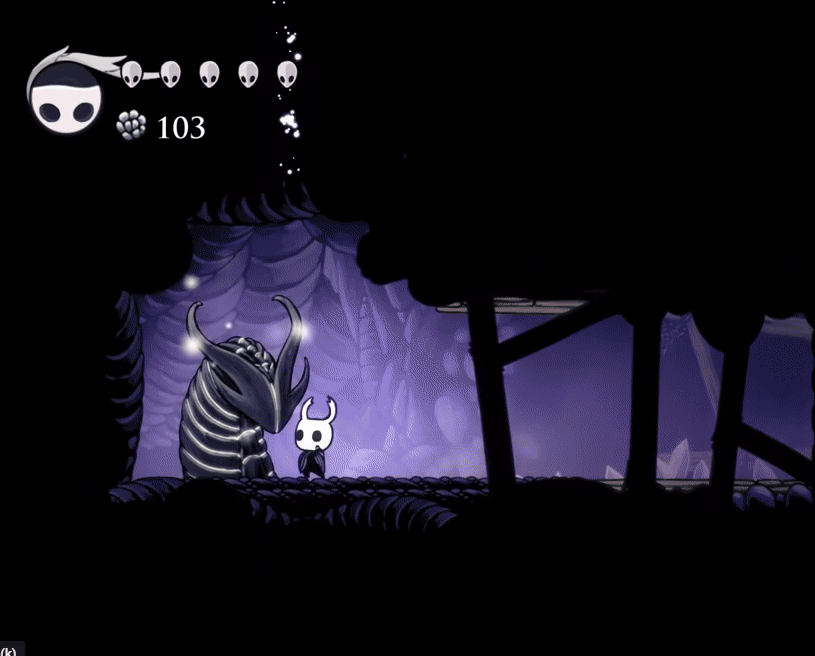
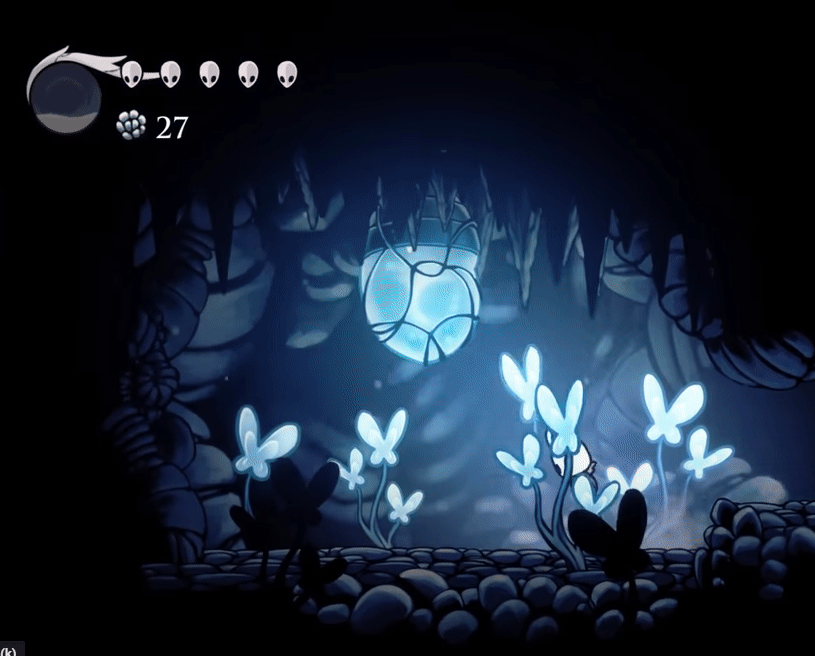
The ability to test out the new knowledge is so densely packed in the first few minutes of Hollow Knight, that by the time the player finishes the tutorial section this action is the only way they know of that allows them to interact with anything. Simply striking things with the Knight’s nail is so prevalent that it is not even questioned when it’s being used in completely different mechanics, most of which are not even explicitly taught but simply discovered.
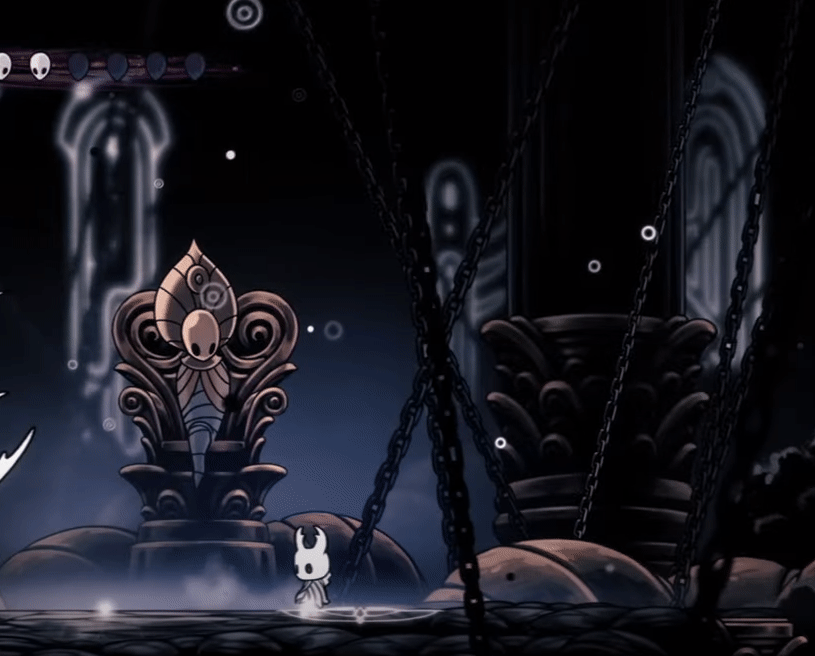
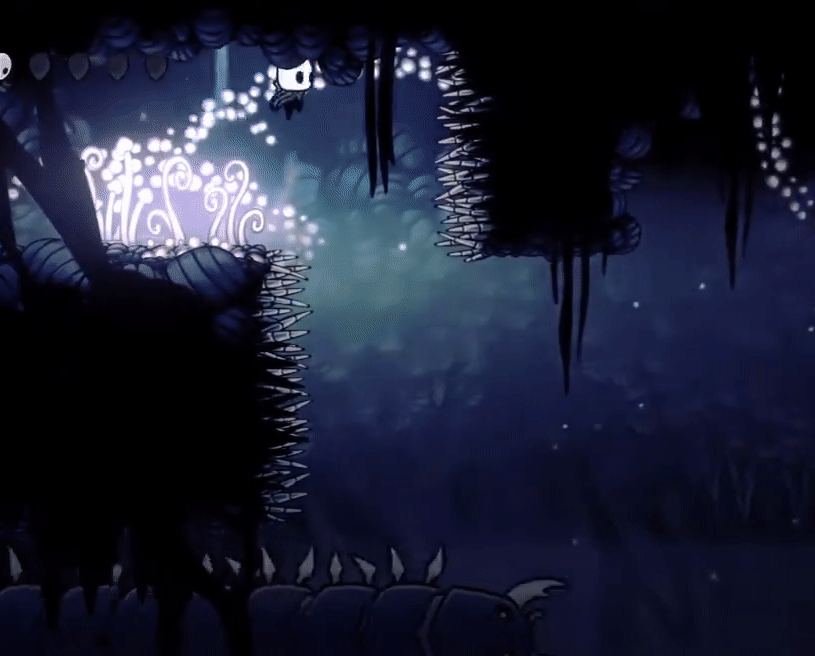
It may be normal to attribute their discovery to inquisitiveness, as these mechanics are never taught in any manner, but there is no denying that it really stems from familiarity of wanting to hit things with the nail that the game has established by the end of it’s first tutorial section.
What does this decision depend on?
As mentioned, intuitiveness stems from familiarity. Depending on the players’ intuitiveness is the safest bet when the game’s mechanics are similar to what’s in other games (especially what the target player base is playing) since it doesn’t have to be taught. For teaching mechanics that are novel and unique to the game, it would depend a lot on how much of the previous stuff the player has learned can be reused. If a new piece of knowledge can be related to something the player has already seen before, the association will help greatly with the learning process. It would also be safe to assume that the players can use it from the get-go, allowing to quickly take on more appropriately leveled challenges after (or even during) the tutorial which would help accelerate the player into the flow state.
On the other hand, if the mechanic is novel or the player is not expected to be familiar with it, relying on their intuitiveness would not be advisable.
Decision 2
Information — Subtle or in your face?
It’s often advised to be subtle with indications lest the players be annoyed. But through the complex emotions a player goes through, information must pass clearly if it has to be grasped. Considering how well crafted emotional experiences in games are, there is no doubt that players are experiencing strong emotions that reduce their ability to grasp knowledge. Experiences may cause fear, anxiety, stress, anger — all which are strong emotions that inhibit the ability to process information clearly.
Let’s take the example of the start in Dead Space 1. Throughout the tutorial section, the player is notified again and again to cut the limbs of the enemies to disable them. It’s even frequently mentioned that shooting them does nothing and only cutting off their limbs is effective. This information is repeated again and again through text, audio, game world cues, and having it yelled at you.
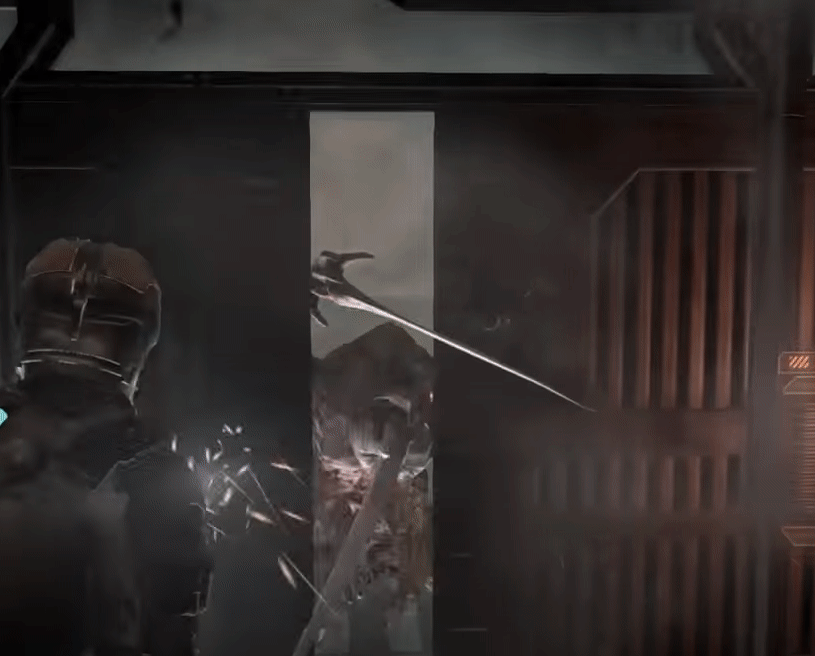
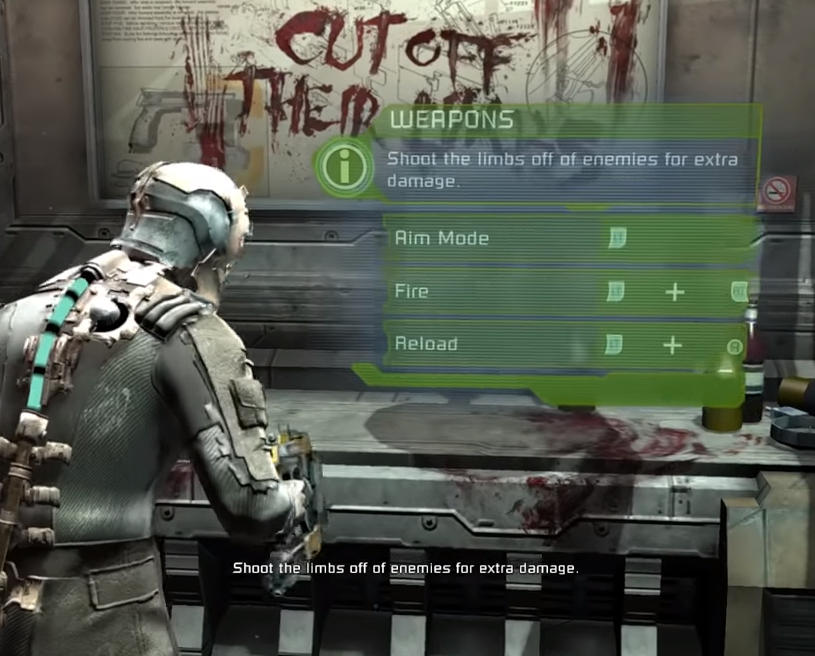
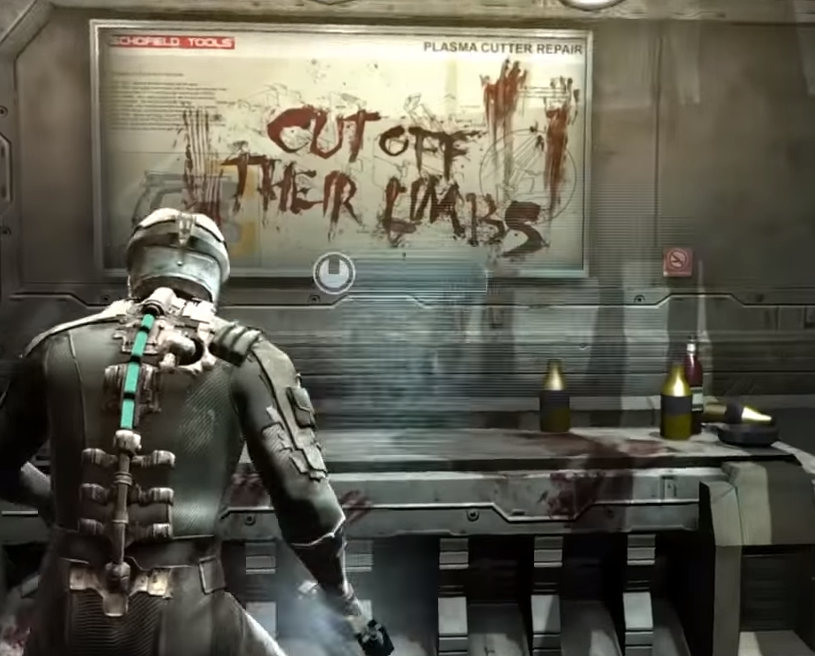
The game is relentless with the information, not leaving anything to subtlety or discovery. It is often compared to the Ravenholm section in Half Life 2 (mainly because of this amazing GMTK video). While the video makes an amazing case for Half Life 2’s tutorial and dispels Dead Space 1's as annoying, it is imperative to analyse the preceding events that have already influenced player emotions.
In Half Life 2, during the Ravenholm mission, there’s a section where we are taught to use the gravity gun and the saws to dismember zombies. While the tutorial itself follows the simple rule imparting knowledge and immediately setting up a sandbox to try it, it does it in a subtle way. The knowledge is a part of the world design, that tells a story and stokes player’s imaginations.
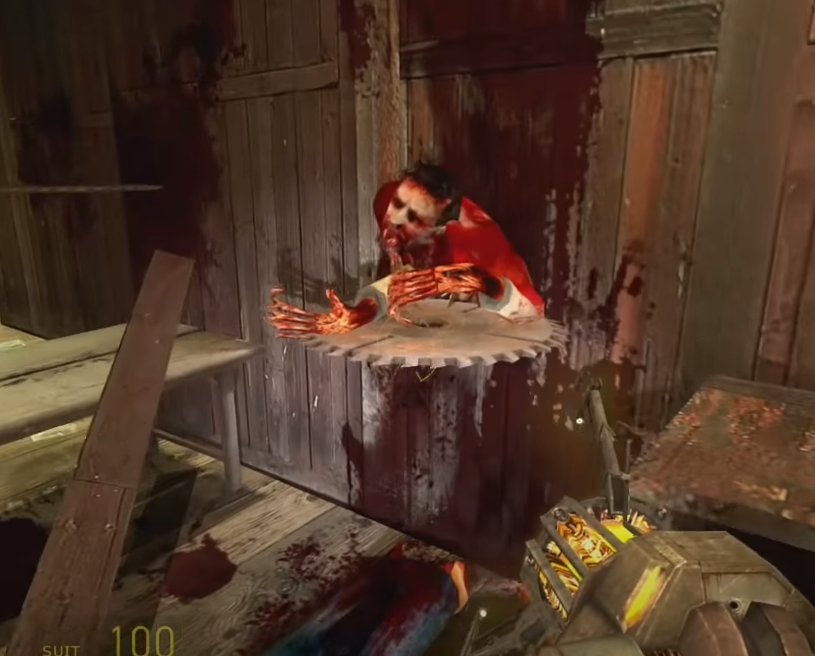
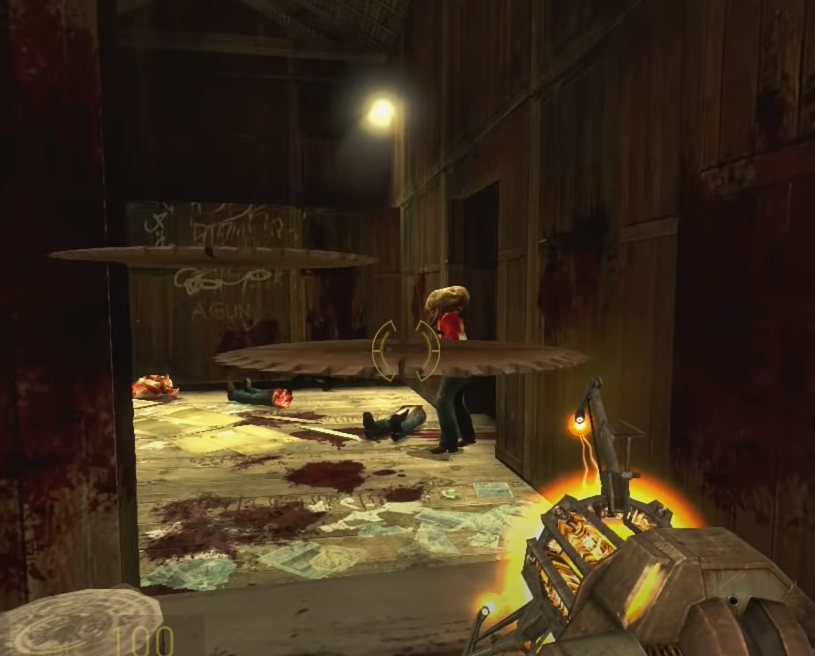
While this is indeed an amazing way to give away the information, neither this enemy for the mechanic are truly unique. The player has fought quite a few zombies so far (and are used to them) and have used the physics based propulsion of the gravity gun quite a few times. The game is thoroughly relying on the fact that it is very intuitive to simply pick up and throw things since that is something which has been taught in depth. The entry into this location is rather calm, albeit with suspense, which means players are more receptive to information than a heightened state.
Now comparing this to Dead Space, everything is new. There is no preceding interaction where the player has used anything that they will be. The weapon and the enemy are brand new. Not only that, it is also missing the calmness of Ravenholm’s barn. The introduction is hoping to achieve pure dread and thrill, which is emphasised by scripted events and a really strong atmosphere. All this causes strong emotions, which makes a player less receptive to information. By understanding the preceding events, Dead Space’s tutorial section makes sure that the information is delivered to the player without any hesitation. It can be also highlighted further by the fact that learning this piece of information is Dead Space is far more critical than the piece of information taught in Half Life 2. Failing to grasp the knowledge in Half Life 2 would still allow a player to simply pull out their gun and proceed, whereas failing to grasp the knowledge in Dead Space would cause repetitive and annoying ‘game over’ situations. The importance of the information will dictate whether it needs to be subtle or in your face.
It is quite possible to argue that Visceral Games devs, creators of Dead Space, could create a scenario that helps players discover this piece of information through world building and with subtlety which is a valid argument. But I also request the reader to get acquainted with the realities and tight schedules of game production cycles and how it affects the ability to iterate on a design.
What does this decision depend on?
It clearly depends on the emotional state that the player is experiencing, and how much their receptiveness to information is inhibited. This may not only come through strong negative emotions (such as fear, anxiety, stress) but also through strong positive emotions. Elation or relief that comes after overcoming a hard challenge is also an engaged state of mind which inhibits the receptiveness, so it should be considered as well.
The decision outcome may come in two variants — information is shown when it is expected for a player to be receptive. This may be during a calmer period, or during an appropriate break in action. Such situations may arise and can be utilised or created by altering the pacing. The other variant may be that the information needs to be in a players face, constantly trying to grab their attention and appear more important than what’s going on.
Practice session — create a sandbox or allow to learn on the job?
Once a player has learnt something, it is expected that they would like to try it out. Not only do they need to build up to the feel of the new mechanic, but also gain some level of mastery before being thrown into a challenge.
There are many ways to allow players a space and time to build up the skill, with merits for each method. For example, some games impart information and let players learn simply by taking on the challenge head on.
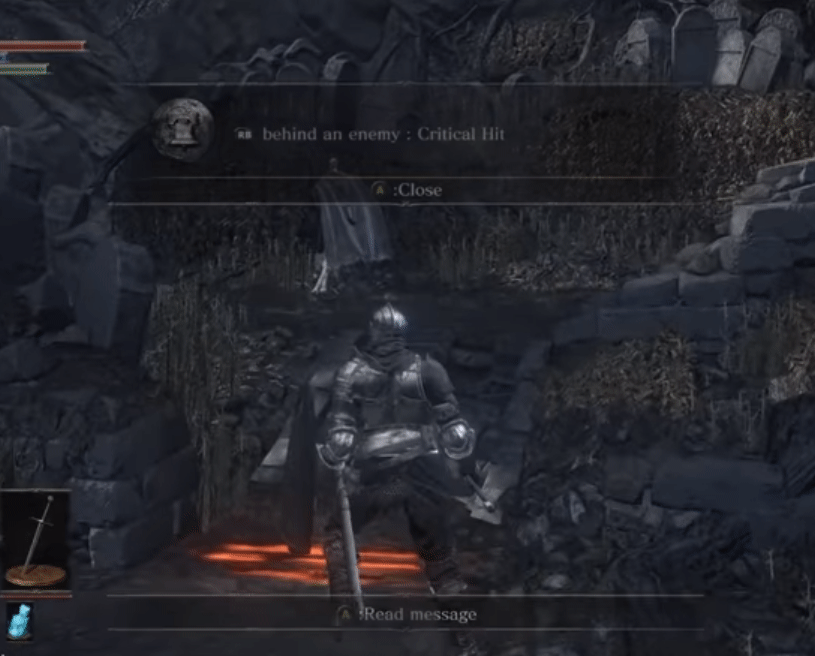
While Dark Souls sets up a scenario to test out this knowledge, Call of Duty throws the player into a high octane situation and simply uses basic prompts. This method works for both these games since the concepts being taught are ubiquitous to their respective genre and have been used in most games that their player base is playing otherwise.
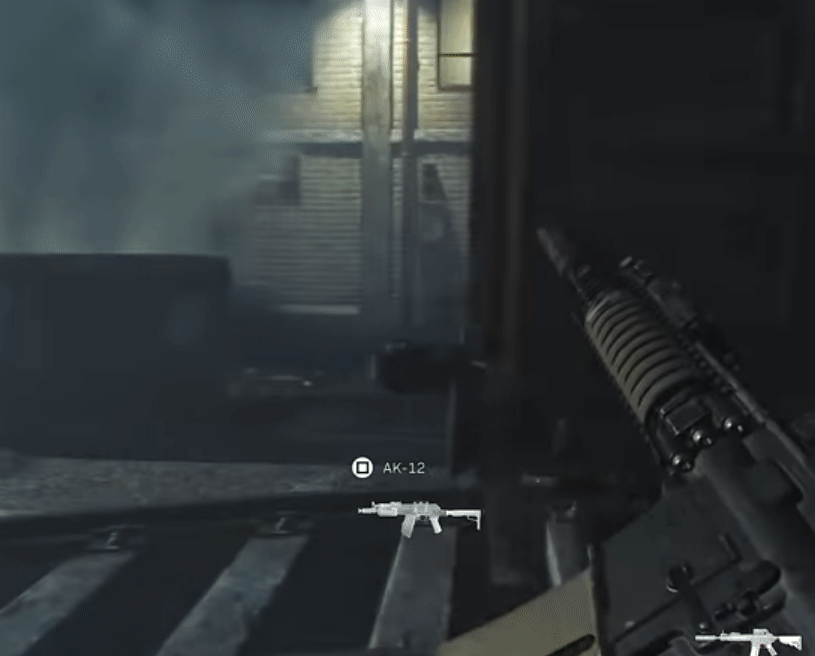
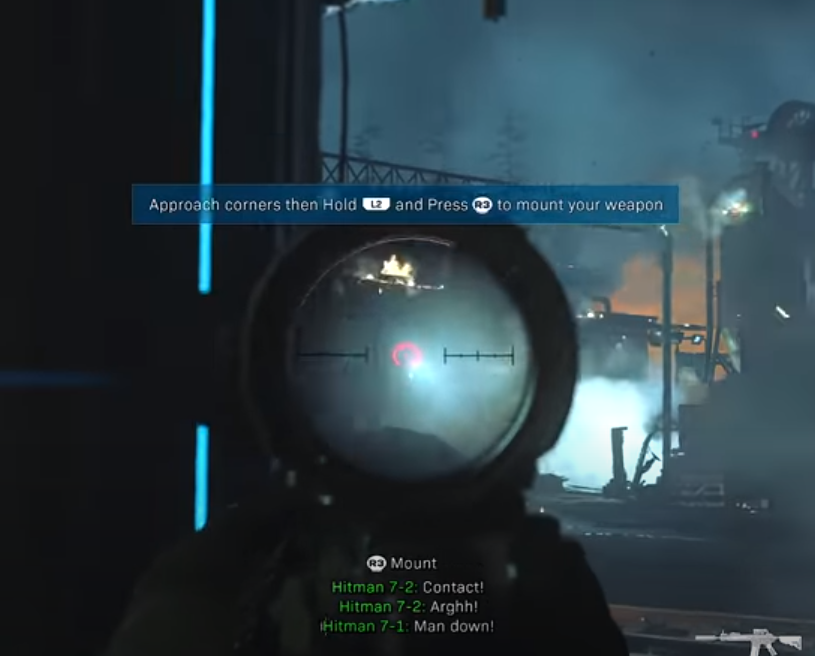
The downside of using this approach is that the players may miss out the information altogether, or fail to use it as intended. It may be also possible to complete the challenge without using the knowledge at all, which may then fail to register in the player’s mind. This is a very conscious decision as this type of tutorial is reserved for mechanics that are primitive to the medium and genre, and the fact will always remain that the players already know how to do these things before they even touch the game.
On the other side, there are tutorials with explicit sandboxes that allows players to test all facets of the new mechanic they are being introduced to. These tutorials create a separate, safe space in the game world that allows players to try whatever they have learnt.
https://medium.com/media/74367406eeb92f8ec959c830c737412d/href
Another example of this approach is Saints Row 4, which instantly teleports the players into a safe space inside the game to try their new abilities.
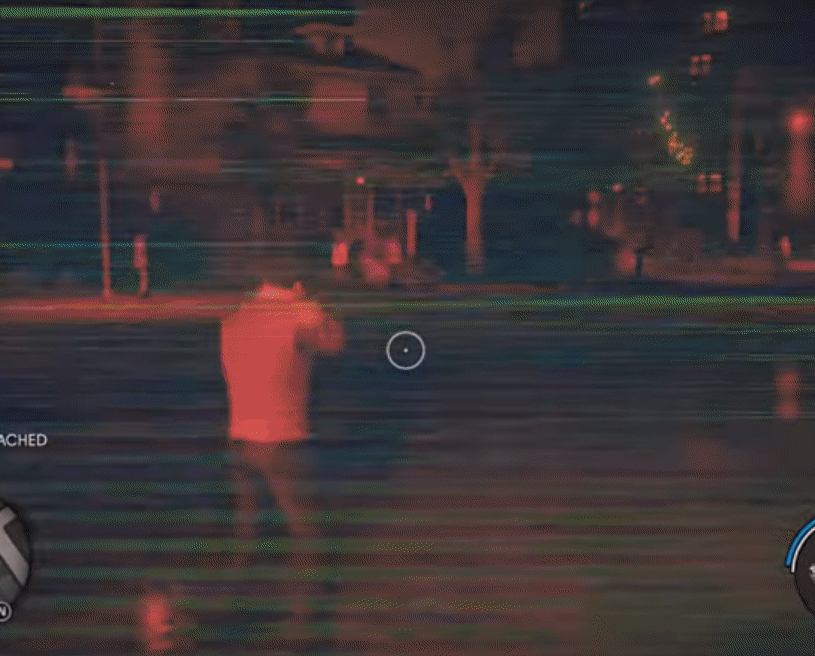
The game does not hesitate to tell that this is a training session, and then proceeds to run the players through a gauntlet to make sure they understand all facets of the new mechanic. Even within the world of the game, they have a piece of fiction wrapped around this concept by explaining it as a “virtual training ground” and having an exposition justifying its existence.
What does this decision depend on?
The need to practice a new mechanic depends on its novelty. If it’s something common and the player need only build up the feel for it, the game can get away with letting them learn on the job. Dark Souls and Call of Duty don’t have a designated tutorial as such, it’s simply a collection of prompts followed by potential scenarios to experience the new knowledge in action.
Doom Eternal and Saints Row on the other hand set up an explicit sandbox for due to the novelty of their mechanics. They require the player to understand the interactions, input, and outcome in a controlled environment before letting the players use these mechanics in a complex system with other mechanics.
Whenever players are put into a sandbox as part of a tutorial, there is always an evaluation criteria that merits exit from the sandbox. This makes sure that the player does not miss out on the instruction or finer details, and granularity in the evaluation criteria allows players to understand what they are supposed to do with this mechanic. On the flip side with allowing to learn on the job, there is also careful consideration of the fact that the mechanics being introduced can be missed, and that is all right for the rest of experience. Without an evaluation criteria there is no gate to make sure that there is at least an objective understanding of the new mechanic.
When choosing to decide whether a tutorial needs an explicit sandbox, decide whether the mechanic needs an explicit and isolated evaluation criteria. Based on it’s novelty and whether players can grasp it the way the designers intend may decide if the player needs to pulled out from the world into a place to practice it in.
Decision 3
Cognitive load — baby steps or front load?
While it is often suggested to not front load all the learning of a game into a single tutorial and to rather break it up and teach whenever required, but there are unique challenges associated with that. Not all games have the luxury of atomic mechanics that reside in silos, dependencies in knowledge makes it difficult to teach one thing at a time. This leads to no choice but to teach many things at once, which may or may not be closely related. This, in turn, increases the cognitive load which makes it harder to be receptive to knowledge or learning anything.
Looking again at Anno 1800, the first hour of the campaign teaches the player about basics of production, supply chain, logistics, consumption, and population. While taking the players step by step from learning to produce goods and then distribute them, and how their population consumes these goods, the game also chooses to encourage players to think how to lay down their roads and city layouts. While the former is a hard requirement to learn, the latter is only a suggestion due to the fact that the knowledge changes for every island. Yet it is impossible for a player to learn how to produce and deliver goods without learning how to lay out their city and roads since these mechanics are deeply interwoven. If taught one at a time, coupled with the freedom to explore, players can follow all instructions and still fail simply because the outcome is part of many game systems working together. Such connected systems create the inherent need to have to teach many things together or simultaneously, which in turn increases the cognitive load on a player when being taught all at once.
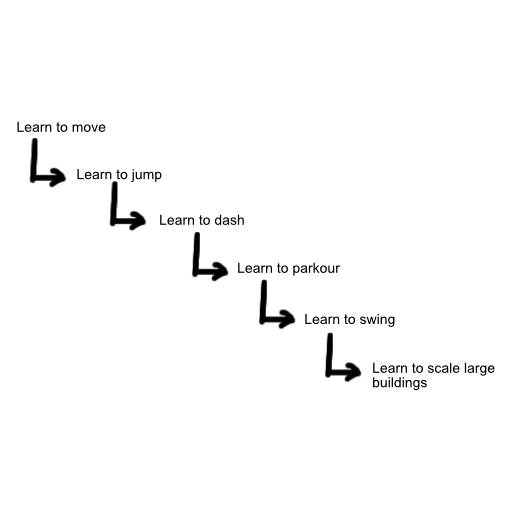
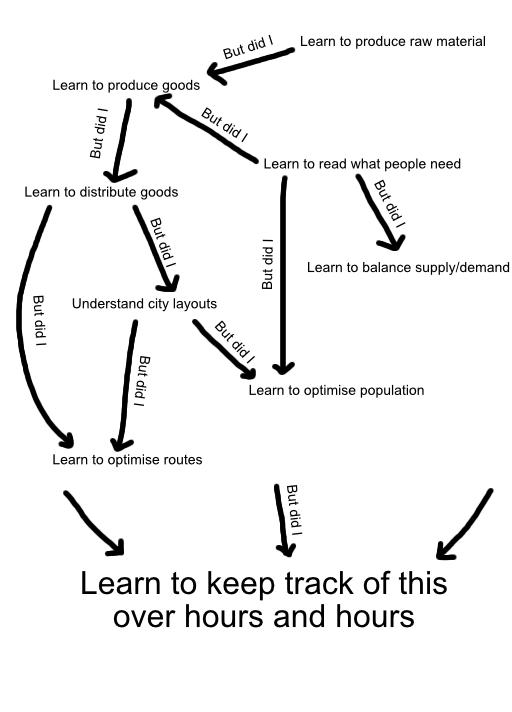
How many topics are taught in a tutorial is an important decision and clarifying the relationship between the mechanics being grouped together will impact what skills the players will prioritise to gain proficiency in. These relations get more complex and harder to grasp as the number increases.
What does this decision depend on?
While it may be possible to teach a related set of mechanics one by one, a game may run the risk of not making the relationships clear by doing so. When it is important for relationship between mechanics to be clear, and both mechanics are atomic in concept, it is best to include them in one tutorial (or at least close by in the game’s progression).
When aiming for clarity, going with fewer elements is always advisable. This may result dependent mechanics and systems being turned off till the current mechanic is mastered (or at least understood), but the longer the tutorial is drawn the farther away players are from playing the true experience. Clarity can also be achieved by ranking multiple mechanics in a hierarchy, so even though a load of learning too many things cannot be reduced at least the players may be able to select one thing at a time to focus on.
But if the game intends to leave things to the player’s curiosity and ability to figure things out, liberty can be taken with how much content goes in a tutorial. In such a case, clarifying the links between basic pieces of knowledge can ease frustration in the early parts which are some of the toughest hurdles to get through before being highly engaged.
Each decision about whether to methodically teach complex mechanics together, or rely on their progressive relation, or expose their relationship enough to allow discovery, will affect a player’s flow state positively or negatively.
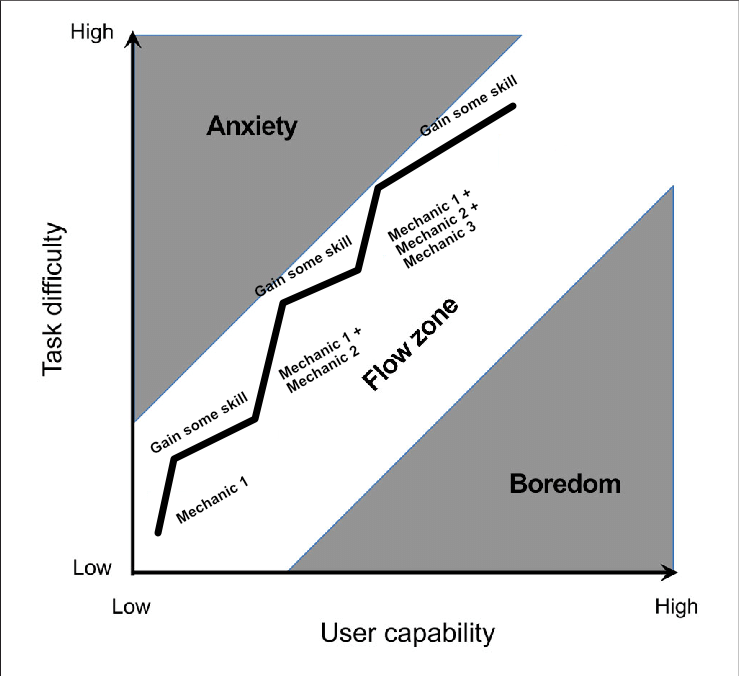
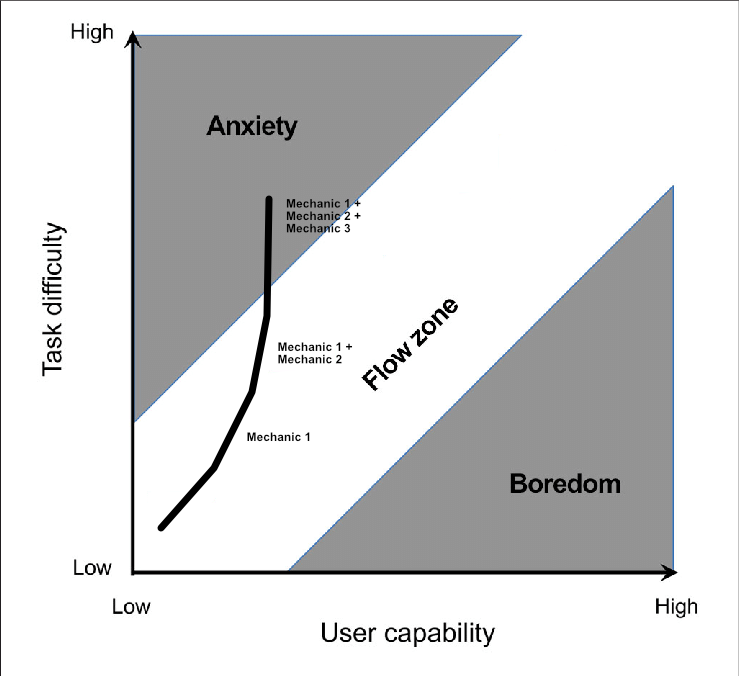
Decision 4
Motivation to push the boundaries of the game — intrinsic or extrinsic?
Many teachers consider their job not to teach, but to spark a fire of curiosity and drive in their students. They only impart knowledge in hopes that students can learn to find their own way to utilise it.
Students themselves obsess over things that inspire once they have learned the basics. Every young football player dreams of scoring a fabulous bicycle kick or beating four players with a dribble. Why would we assume video games don’t create the same motivations through excellence of examples?
There are multiple ways to inspire players to make the knowledge their own, but if inspiring is a core part of the experience then players tend to gravitate to communities by themselves in search of knowledge. Let’s take the example of Slay the Spire, a roguelike deck builder. The community is full of players posting their decks and plays which opens up new and more inspiring ways to use but a limited set of cards. Synergies that salvage a combat situation by the skin of their teeth are revered, as are combinations that allow players to wash away enemies. The same happens with deep games like Dark Souls, where more and more complex builds seem to pop-up to overcome intrinsic challenges. While the knowledge is limited, the community finds a way to inspire its members to keep using in their own and unique ways regardless if the game sets up the challenge.
The same is applicable for skills. While games like CS:GO are, at their core, point and shoot, the community has found ways to express skills with their personal flair. Trickshots, quick scopes, no-scopes, and many are manifestations of being able to master a simple skill. It does not simply stop at that, as examples of tactical plays, positioning, and leveraging a map are some of the most inspiring video clip montages that drive players to want to emulate their idols in competitive matches.
Another dimension to achieving this is simply creating an extrinsic target for players. For multiplayer games, this comes in the form of ranks, ladders, statuses, leagues, badges, and plays of the game. For single-player games, this may be speedrun timings, achievements, or even off the course hidden secrets inside the game. What matters is that these are intrinsically placed inside the game.
Coming back to CS:GO, or any competitive game akin to Overwatch, League of Legends, Tekken, etc. is that extrinsic objectives that push players to want to acquire new knowledge or practice their skill further exists in the game but the community forms outside it. Whereas for games like Dark Souls and Slay the Spire, nothing or very little exists in the game to push players to want to learn more and practice more.
What does this decision depend on?
While inspiration will lead the players to want to learn more or get better at a skill, it’s clearly not part of a tutorial and any method’s goodness cannot be measured by our previously defined parameters. But alternatively we can gauge the “goodness” of any method objectively to inspire by understanding
- How esoteric it is?
- How often it is exposed to a player?
From all examples, it is clear that the community forms outside the game. Along with that, it can also be observed that shallow extrinsic motivators can fail, yet the game can successfully allow its community to create intrinsic motivators by excellence in examples (the leaderboards in Slay the Spire do not create as much drive as watching someone’s well crafted turn on Reddit). Irrespective of the community, any game drive intrinsic motivation to engage with knowledge and practice skills by exposing it.
Many games rely on content creators for that, or even simply exposing competitive play. Countless montages of perfect plays and precision skill execution of CS:GO across social media serve as exposure to what high skill coupled with excellent usage of knowledge does. But Overwatch (and even Rocket League) incorporate “play of the match” and other variants of highlights right in the game which serve as instant exposure to the nearest best player and source of inspiration — the one right in the player’s current match. A series of exposure to the nearest best examples creates a local ladder that allows players to bridge the gap between the best they can immediately aim for and what they can reach by the end of their journey. While leaderboards and ladders don’t have the granularity or personal approach, they too act towards creating exposure for the best skills in the game.
Whether the method ends up being esoteric is a function of the game’s complexity. Looking at multiplayer shooters, it naturally falls into layers without the intent of design. Players will first try to learn how to aim well, or choose their arsenal before moving on to more complex aspects like understanding levels, or deconstructing the weapon set to their own advantage. Based on how complex the game is, it is advisable to allow steps. But considering that intrinsically motivated endeavours involve a lot of agency, what players may choose to pursue can be wildly unpredictable to be used meaningfully in design. So always be on the lookout of where the game is being shared to understand how players are being exposed to things that motivate them.
Take-away
While there can be no genre-agnostic conclusion and a set formula to create the perfect tutorial, there are some common decisions that all designers will run into. Some part of the learning experience may be inside the game, some part may be outside, while some part may carry forward from previous experiences. Knowing what position a tutorial will take place in a series of experiences, the expected emotional state of a player, and how much cognitive load they will face, these decisions may shape the bulk of the tutorial experience.

The UX of video game tutorials was originally published in UX Collective on Medium, where people are continuing the conversation by highlighting and responding to this story.
